Buy 'KINGDOM UNDER FIRE: Heroes': Xbox
It's simple, really. Nobody really saw Kingdom Under Fire: Crusaders coming; it completely broadsided a couple of genres with its blend of action and strategy, and was probably one of the best games few people ever played. It was – and still is – simply fun to pick up and play now and again, and the metal soundtrack didn't hurt much. Kingdom Under Fire: Heroes is largely the same game as its predecessor, though it has enough changes to it to warrant the new title and maintains a constant level of entertainment for the duration of its length.
Like the previous title, Kingdom Under Fire: Heroes is a unique blend of RPG elements, Dynasty Warriors-esque brawling, and strategic aspects to tie the action into one coherent battle. The plot takes place after the end of KUF: Crusaders, and the war between the humans and the Dark Legion has been started again after a massacre found at the site of what was once a human town. Much as in the previous iteration, the plot unravels both via admittedly boring and long scrolling text blocks or in-game through dramatic cut scenes. At the start, the events of the previous title have already set the stage, so people who haven't experienced it will be a little clueless at first, but not to the point where the storyline is totally alien and overwhelming, thanks to more than a few subtle context clues.
There are two particular and overarching aspects of the gameplay of Kingdom Under Fire: Heroes: the times when you are on the battlefield and the times when you're not. Jokes about the obvious aside, each half of the gameplay is equally important and proper planning from the safety of a castle is just as important as making quick decisions in the heat of battle. While in places such as castles, forts, and camps, you are presented with a few selections to choose from. "Operations" is where you get your briefings for upcoming missions, speak with kings and generals, and gain a large part of the storyline. "Barracks," which will be further explained later on, lets you customize and equip your officers and troops.
The "Pub" option allows you to hire new officers or to listen in on soldiers' conversations, which in turn serves as another means of plot progression and ways to fill in the blanks in terms of the storyline. "Training" allows you to take what is essentially a training course in nearly any class of combat, which can be incredibly useful if you have never used a particular class of troop. Finally, "Main Gate" allows you to leave the castle and engage the enemy in your next mission.
Once you have exited, you are presented with the World Map, which an incredibly detailed and yet rather limited representation of the world. As beautiful as it is, it also serves very little purpose because although you can move the cursor to nearly any location on the map, you can only order your troop unit to move to the next mission. Thusly, you cannot sort of "wander" to engage enemy patrols to gain more experience or gold but are rather set on a linear path. Such a feature would be nice, but it is hardly a deal breaker – just a bit aggravating to see this lush world only as the game sees fit. Either way, once your troop unit has reached the next mission via a miniature troop animation reminiscent of Monty Python, you are at your mission. After selecting whatever troops you wish to use (you must always bring your main troop, and sometimes are required to bring others along), it's off to the battlefield.
Once on the battlefield, you can control your troops in a detached manner. By moving the left thumbstick, you change an order line that allows you to give your troops a direction and distance to move to. Your troops always move in a box formation, with the exception of archers and cavalry, which travel in rows, although you can order your troops to move in wide, normal, or close formation. The wide formation allows your troops to move faster, and while they take less damage from explosions or traps, they take more damage from arrows. Similarly, the close formation slows down your soldiers and makes them vulnerable to explosions or traps, but it also makes them well-defended against arrows. This feature is one of the most used throughout the game, as there are many times when you'll need to advance under a hail of arrows, keep a low profile while bunched together to sneak through a forest, or simply chase after an enemy as fast as your troops can.
Once your troops have closed the distance between your troops and enemy troops, the battle begins, and the camera and control immediately and seamlessly switch to your character. In this mode, Kingdom Under Fire: Heroes handles quite similarly to the Dynasty Warriors series, but with a bit more strategy to it. While in combat, your character has fast attacks, a strong attack, special attacks, and dodge moves, and this is where the differences between the characters make their appearance. In addition to your special moves, you can call upon those of your officers, which allows you to bring a little extra muscle to clear out enemies in your immediate vicinity. A big tactical advantage in combat comes with the inclusion of leaders in the mix. Every troop has a leader, the elimination of which causes enemy morale to drop rapidly. Nothing is funnier than watching the remnants of a once-menacing Orc troop scatter because their leader is now basting in his own juices.
When a troop isn't directly engaged in combat, they can utilize any special moves known by any officer within the troop. For instance, archers can fire direct shots instead of volleys which deliver twice the damage at half the range, or can launch a volley of fire arrows into a forest to create a devastating wall of flame. Sapper troops can set and remove traps in the terrain, while other troops can heal units or cast offensive magic such as blizzard, chain lightning, or meteors. Another useful ability is Scout, which allows you to send a single, quick-moving unit to check out the terrain ahead and assess the situation before you move your troops in. It must be noted that while you can use a troop that is out of battle to heal one currently engaging enemy forces, a troop that is in battle cannot use any of its special abilities, which means that in most situations, foresight and planning much be used in setting up your attacks and knowing when to cover a retreat to make a quick heal.
Kingdom Under Fire: Heroes is definitely a thinking man's game, through and through. Many factors affect the battle conditions of any particular battle, such as ground elevation, weather conditions, terrain, sun angle, and troop classes. Putting archers on higher ground allows them to shoot farther and with greater power, but if the clouds are thick and rain is pouring down, none of your units will be able to see that far. You can effectively conceal your troops by moving through wooded areas in which arrows have a hard time leaving or entering the treetops, but if you order your troops to wade across a river, any enemy archers will be able to pick them off mercilessly. The sun itself can be an enemy or an ally if it is at a steep angle, as any archer looking towards the sun will have a hard time finding his mark, and likewise, it is best to rush archers with your back to the sun.
Troop classes play a large role in the dynamics of combat; while aerial units can pick off infantry with impunity, they are easily batted down by arrows. A cavalry charge can also deal great damage to ground troops if used with hit-and-run tactics, but engaging any units while stationary puts them at a huge disadvantage. As a whole, while it can be an impressive show of force to send three infantry troops into the fray at once to create a massive battle, it can equally gratifying to outwit your opponent by weakening them with a blazing forest and a cavalry charge before they have even met the bulk of your forces. Upon the completion of your mission objectives, a screen appears that details how many enemy units each of your troops killed, how much experience you received, and how much gold you earned. Gold and experience are shared amongst all of your troops, preventing any undue micromanagement of your battles.
With fresh experience points and coffers filled with gold, you can now visit the "Barracks" back at any castle, fort, or camp to upgrade your skills and equipment. Officer's skills are things such as melee efficiency, ranged efficiency, magical categories (holy, curse, earth, etc.), and other skills such as gunpowder, teamwork, and taming. Increasing a major skill not only strengthens the level of that officer but also the skills and level of the troop as a whole. Units with high melee skills also have large amounts of skill points and health. When units have enough of specific skills, they can change jobs a la Final Fantasy Tactics / Advance, such as an infantry troop starting off as basic foot soldiers, then becoming improved soldiers, knights, and finally paladins.
The amount of jobs varies between the races (Human, Elf, Dark Elf, Orc, etc.), and while the humans have a large amount of jobs to choose from, the Dark Elves are a bit more specialized and have fewer jobs to choose from. Equipping officers and troops takes gold and large amounts of it, as it can sometimes take the entire winnings of a battle to purchase that armor you've had your eye on. Purchasing equipment for your officers is incredibly expensive, as it often costs more to buy armor for an officer than it does to outfit similar armor for all of the soldiers in a particular troop. Weapons and armor can have benefits as well, such as additional skill points, greater experience gains at the end of a battle, or additional defense against types of attacks such as melee, ranged, explosion, or frontal.
The graphics in Kingdom Under Fire: Heroes are easily the best the genre has seen and could almost be compared to conventional third-person games, an impressive feat, considering how many characters and objects can be on screen at once. Armor has a realistic glint to it as soldiers march through the sunlight, and the camera itself shakes slightly as it moves, which makes the camera work seem much less artificial and the on-screen action seem that much more raw. The models themselves are very well done, and even up close, there is barely any lack of detail or things that look amiss. The draw distance is fairly limited, but not limited to the point where it becomes an issue. What's more, enemies coming at you look like they are actually coming out of a fog instead of suddenly appearing in front of you, as they do in the Dynasty Warriors series.
Battles look particularly massive and brutal, as groups of soldiers wage personal wars with one another and send each other's blood flying about, but the most impressive effect is when it all comes together at the end of a battle, and you see that the ground is littered with blood and bodies interspersed with arrows stuck in the ground. To top it all off, the cut scenes in Kingdom Under Fire: Heroes are nearly Hollywood quality in their direction and consist largely of very artistic shots and brilliant camera work overall.
It's not that the game is without a flaw, obvious discrepancies in the voiceovers notwithstanding. Kingdom Under Fire: Heroes could have benefited greatly from an offline co-operative play mode. Nevertheless, the game does support Xbox Live to allow for players to team up and wage war with one another, which is undoubtedly the place many players will spend a large chunk of their game time in. The game also lacks a mission select mode, so to play through your favorite missions, you have to reach them under another campaign file. Additionally, it can be difficult to give orders to multiple troops in the heat of battle, and it would have been nice to give specific formations among entire troops, such as keeping archers 100 feet back so that they can cover the front lines. Camera control is largely pretty good and relatively painless, but every once in a while, the view will inexplicably get stuck above the tree line as you traverse a woodland area.
Not only did Kingdom Under Fire: Crusaders come out of nowhere, but Kingdom Under Fire: Heroes also came from the exact same direction and still remains an excellent title to have a great deal of fun with while using one's strategy bone. Dynasty Warriors may be the current king when it comes to your medieval-themed brawler, but Kingdom Under Fire: Heroes easily topples it with the excellent strategic elements that allow for even armchair generals to become masters of medieval warfare. As stated before, the game is not without flaws, and many areas could use a bit more polish, but overall, the quality remains consistently high through the entire run of the game. Essentially, if you enjoy strategic combat, or at the very least love getting into the thick of it and swinging your way through enemy infantry in a fit of rage, Kingdom Under Fire: Heroes is a solid game that no fan of either genre should live without.
Score: 8.7/10
More articles about Kingdom Under Fire: Heroes


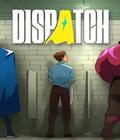
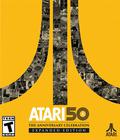
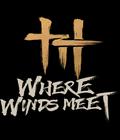
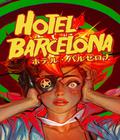





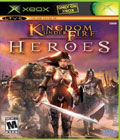 Kingdom Under Fire: Heroes raises the intensity of the fast-paced action-strategy game with improved epic battles; new characters, environments, units; and new multiplayer options for waging war.
Kingdom Under Fire: Heroes raises the intensity of the fast-paced action-strategy game with improved epic battles; new characters, environments, units; and new multiplayer options for waging war.






































